| 1. Setup Security/Utilities |
| 1.1. User Administration |
| 1.1.1. Introduction |
|
SECURITY SETUP - USERS IMPORTANT NOTE: Converted dbf databases will have their current users entered as ManexCloud users. However, their passwords will need to be reset and the admin may have to populate additional fields. ADDRESS
{rootURL}/Admin/Users NOTE: {rootURL} is the URL you use to access ManexCloud
AVAILABLE ACTIONS From this screen, the system admin can:
|
| 1.1.2. Fields and Definitions |
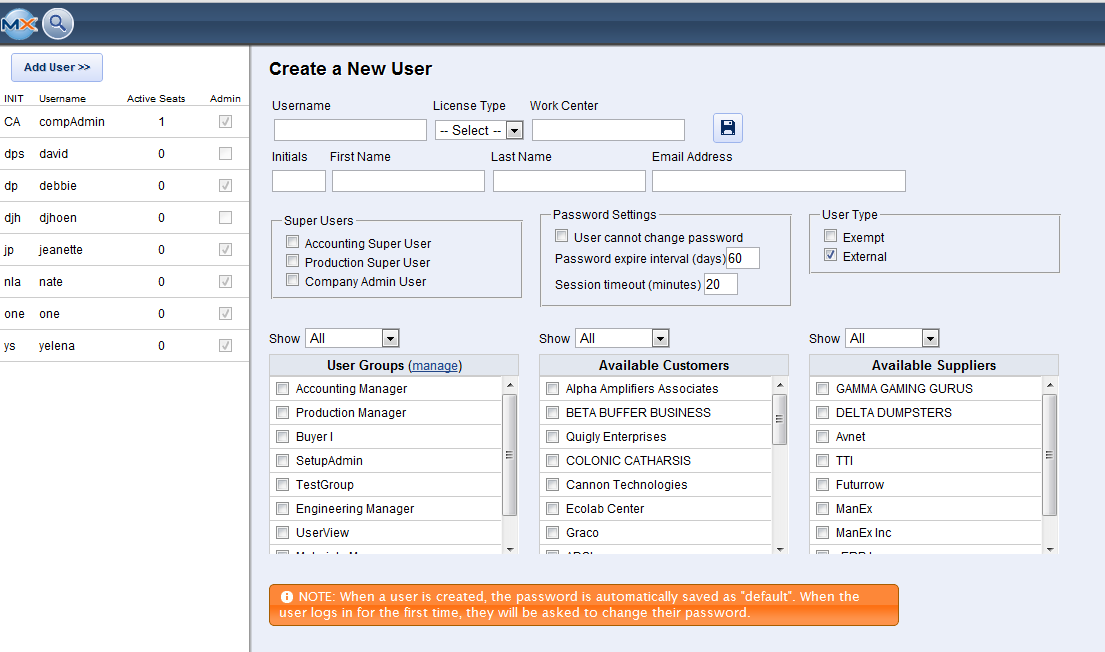 IMPORTANT FIELDS
**Available Customers/ Suppliers Section : For example 'External' users are generally restricted to certain customers/suppliers. As you can see in the screenshot below this 'External' user only has access to those selected Customers and Suppliers. These same restrictions can be applied to 'Internal' users, if you wanted them to only have access to certain Customers/ Suppliers.
'Internal' users generally have access to all Customers and Suppliers at all times. In this case, we recommend not checking any Customer and/or Supplier. Leaving everything unchecked, gives the user access to all Customers/Suppliers, including new ones added. As soon as you select one or multiple Customer/ Supplier that will then restrict access to only those selected.
Once a user has been setup and thy have signed in and changed their password from the "default", the "Password Settings" screen (as shown above) will be changed to the following "User Status and Password" screen, where two more boxes are added giving the options to Suspend the user or Reset the users password to default.
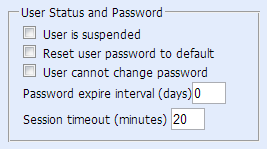 The following is a list of roles that will be permitted if a user has a license type of Production: "BOM_View","BOM_Print", "CAR_View", "CONTACTS_View","CUSTOMER_View", "ECO_View", "KIT_View", "ROUTING_View", "DFCTENTR_Add","DFCTENTR_Edit","DFCTENTR_Delete","DFCTENTR_View", "SHOPFLBC_View","SHOPFLBC_Add","SHOPFLBC_Edit","SHOPFLBC_Delete","SHOPFLBC_Print","SHOPFLBC_Price","SHOPFLBC_Setup", "SHOPFLWC_View","SHOPFLWC_Add","SHOPFLWC_Edit","SHOPFLWC_Delete","SHOPFLWC_Print","SHOPFLWC_Price","SHOPFLWC_Setup", "SHOPFLWO_View","SHOPFLWO_Add","SHOPFLWO_Edit","SHOPFLWO_Delete","SHOPFLWO_Print","SHOPFLWO_Price","SHOPFLWO_Setup", "TIMELOG_Add","TIMELOG_Delete","TIMELOG_Edit","TIMELOG_View", "WO_View", "WRKCAPCT_View", "WRKINSTR_View" .
|
| 1.1.3. How To for User Administration |
| 1.1.3.1. How to Add Users |
Login to MANEX Cloud and find the Setup group. Select User Administration Select the "Add User" button and the following screen will be displayed: Enter a User Name and Select the License Type from the pull down selection. You can also fill out any other available details at this point:
NOTE:The system will remove access to ALL other modules and screens when the user is assigned to a production user license. Then, when the user logs in, their session will go under the production license and consume the production license seats. Users assigned to the production user license can be granted access to anything accessible from the Shop Floor Tracking Screen. This means in the security setup all options will be hidden except for: Shop Floor Tracking, Shop Floor Tracking by Bar-Code, Time & Attendance, Statistical Quality Control, and PDM. Of course, companies will have to own the module in order to be able to grant access. The following is a list of Roles that will be permitted if a user has a license type of Production. When the admin selects the groups for the user, all the related roles are assigned. Then, when the user logs in, it checks the license type and strips out all roles not on that list (if not a Full license type). "BOM_View","BOM_Print", "CAR_View", "CONTACTS_View","CUSTOMER_View", "ECO_View", "KIT_View", "ROUTING_View", "DFCTENTR_Add","DFCTENTR_Edit","DFCTENTR_Delete","DFCTENTR_View", "SHOPFLBC_View","SHOPFLBC_Add","SHOPFLBC_Edit","SHOPFLBC_Delete","SHOPFLBC_Print","SHOPFLBC_Price","SHOPFLBC_Setup", "SHOPFLWC_View","SHOPFLWC_Add","SHOPFLWC_Edit","SHOPFLWC_Delete","SHOPFLWC_Print","SHOPFLWC_Price","SHOPFLWC_Setup", "SHOPFLWO_View","SHOPFLWO_Add","SHOPFLWO_Edit","SHOPFLWO_Delete","SHOPFLWO_Print","SHOPFLWO_Price","SHOPFLWO_Setup", "TIMELOG_Add","TIMELOG_Delete","TIMELOG_Edit","TIMELOG_View", "WO_View", "WRKCAPCT_View", "WRKINSTR_View" Enter a Work Center (if applicable), enter the users Initials, First Name, Last Name, Email (if applicable), and check any boxes that pertain to this user: 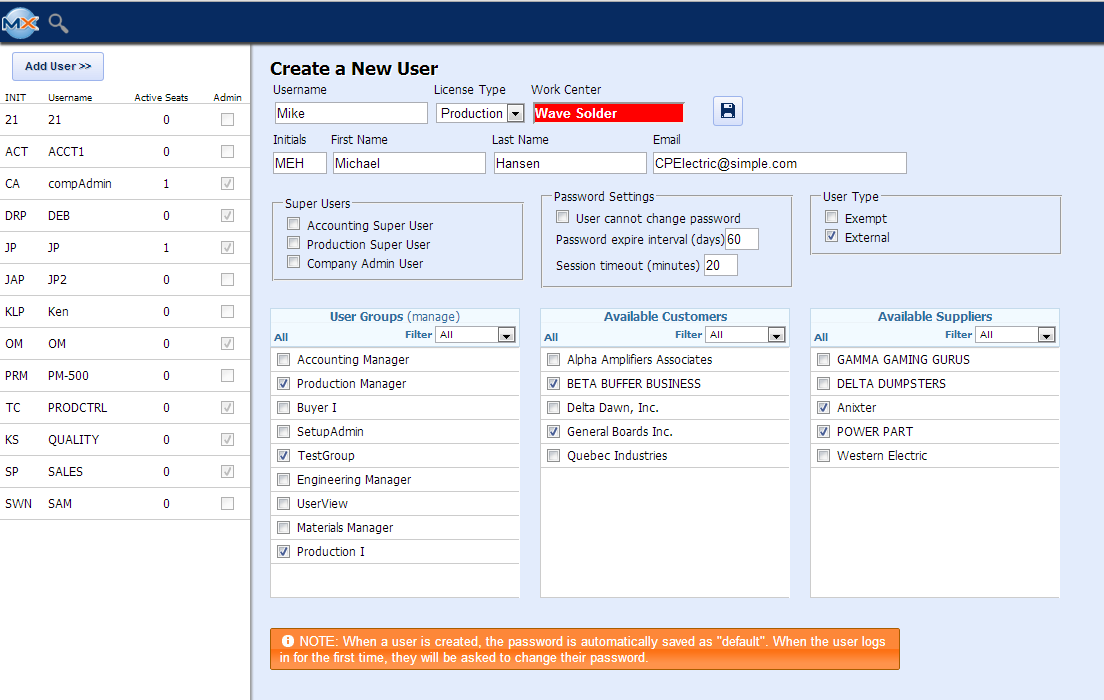 Super Users: Checking these boxes will override the license Type rights. If the Accounting Super User box is checked this user will have full rights to all Accounting modules, if the Production Super User box is checked this user will have full rights to all Productions modules, if the Company Admin User box is check this user will have full rights to all Accounting and Production modules. Email Address: If users want to allow for duplicate email addresses for their users (e.g. they want all production users to connect to the same email address), then they need to make this change in the web.config file <membership defaultProvider="CustomizedMembershipProvider"> <providers> <clear /> <add name="CustomizedMembershipProvider" type="System.Web.Security.SqlMembershipProvider" connectionStringName="eManEx" maxInvalidPasswordAttempts="10" minRequiredPasswordLength="5" minRequiredNonalphanumericCharacters="0" requiresQuestionAndAnswer="false" enablePasswordRetrieval="true" passwordFormat="Encrypted" applicationName="Manex" requiresUniqueEmail="false" /> </providers> </membership> Depress the "Add User" icon to add the new user. NOTE: That when a user is created, the password is automatically saved as "default". So, when the user logs in for the first time, they will be asked to change their password. 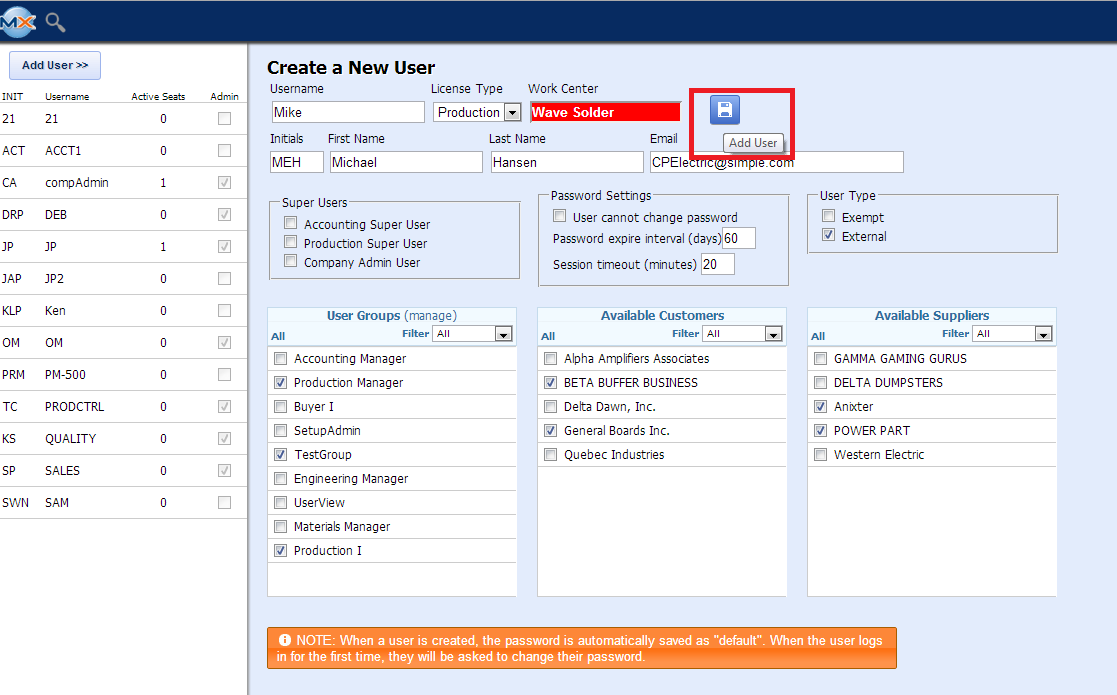
If there was a problem found a warning will be displayed at the top of the page and the field will be displayed in RED, as displayed below: 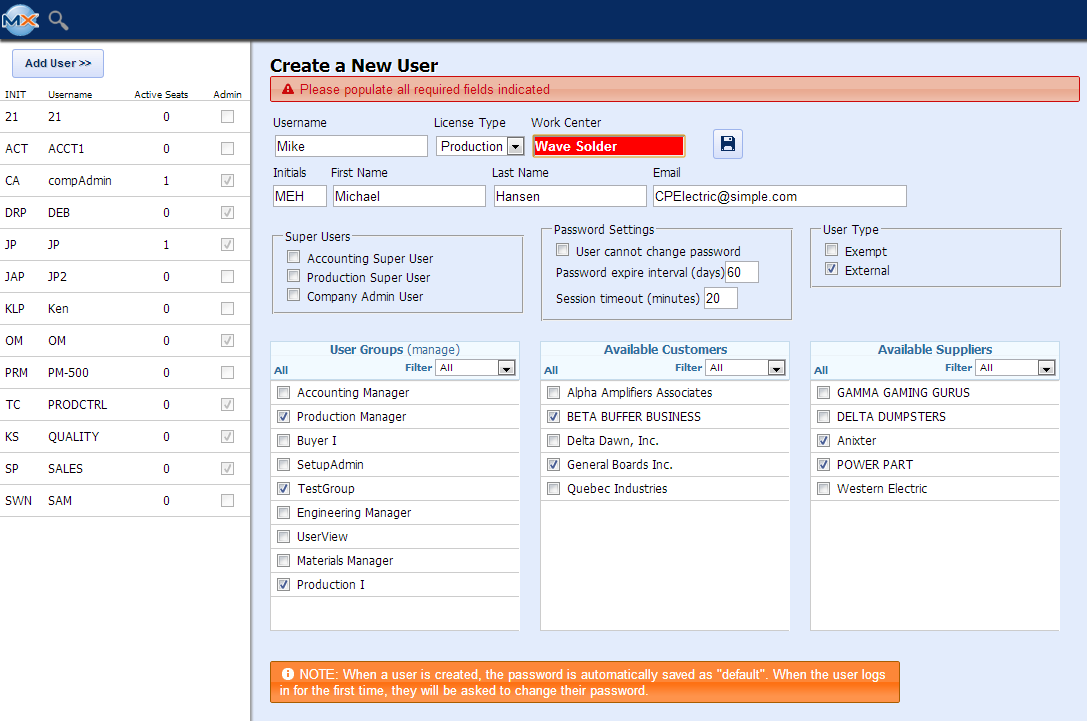
Once the problem has been fixed a noticed will be displayed at the top of the page that the "User was added successfully"
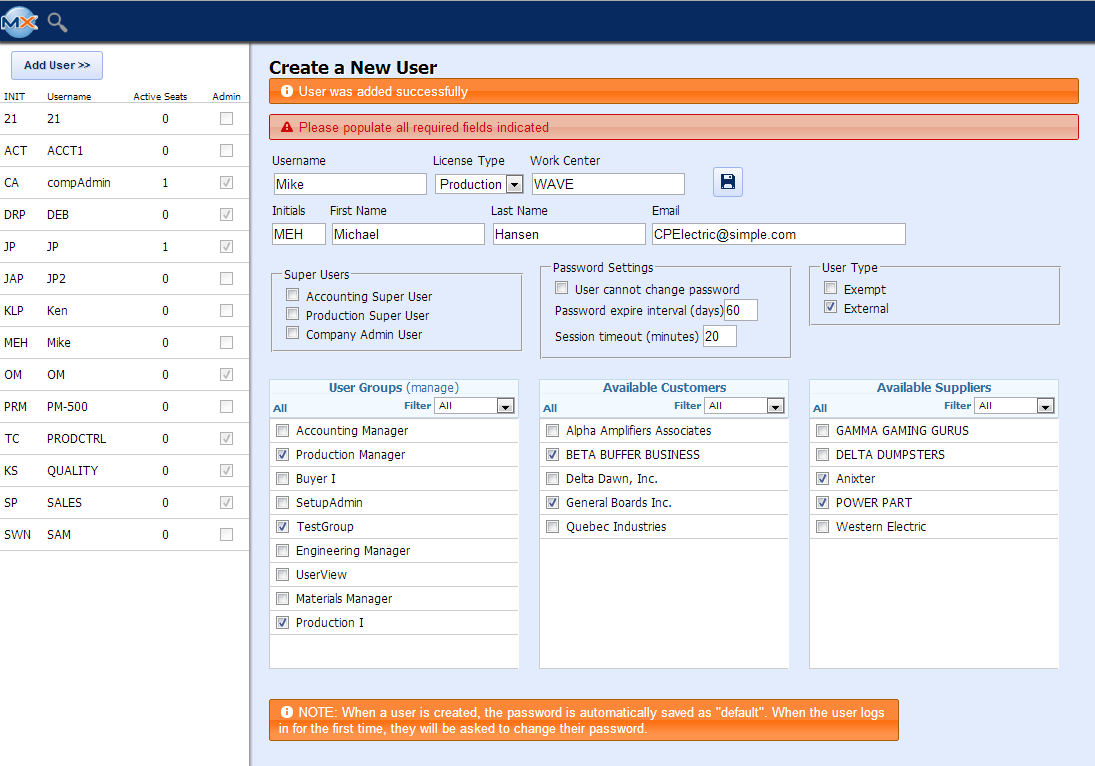 NOTE: That when a user is created, the password is automatically saved as "default". So, when the user logs in for the first time, they will be asked to change their password.
Highlight user on left and the following screen will display all the detail for this user only.
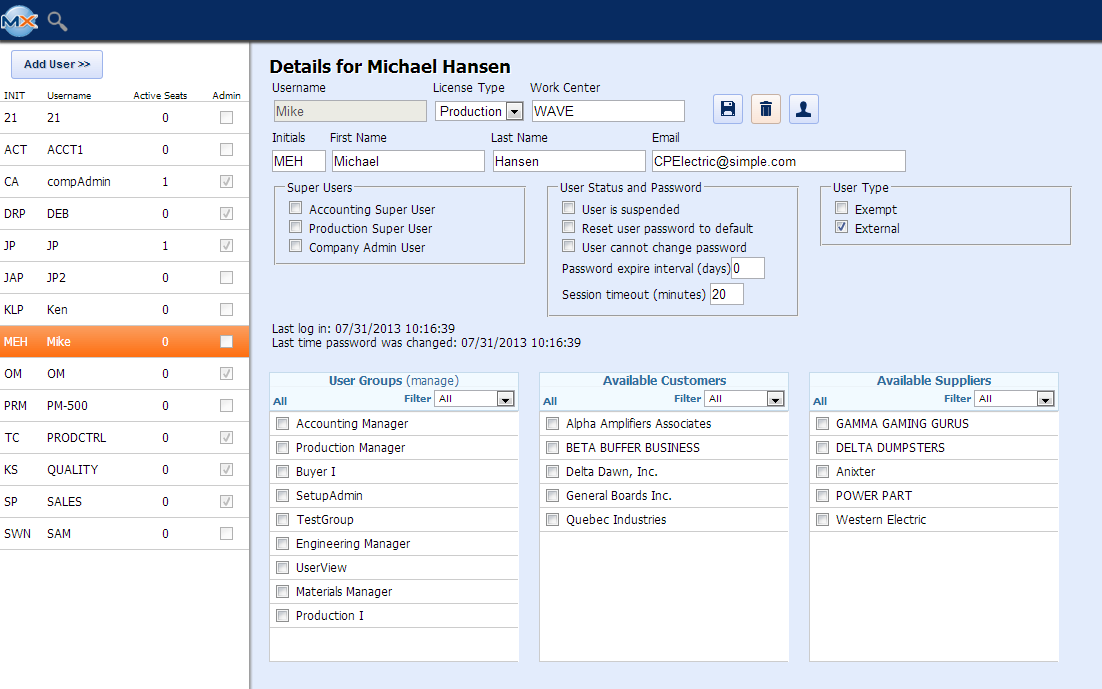 |
| 1.1.3.2. How to Edit or Delete Users | ||
Login to the WebManEx and Select Setup
Select User Administration
Highlight the User of Interest (to the left) to View the Details for that specific User. Within this screen there are options to Save Changes, Delete the User or View Users Roles
This screen also contains four function Buttons:
Super Users:
NOTE: The system will remove access to ALL other modules and screens when the user is assigned to a production user license. Then, when the user logs in, their session will go under the production license and consume the production license seats. Users assigned to the production user license can be granted access to anything accessible from the Shop Floor Tracking Screen. This means in the security setup all options will be hidden except for: Shop Floor Tracking, Shop Floor Tracking by Bar-Code, Time & Attendance, Statistical Quality Control, and PDM. Of course, companies will have to own the module in order to be able to grant access. Email Address:
If users want to allow for duplicate email addresses for
their users (e.g. they want all production users to connect to the same email
address), then they need to make this change in the web.config file:
<membership
defaultProvider="CustomizedMembershipProvider">
<providers> <clear /> <add name="CustomizedMembershipProvider" type="System.Web.Security.SqlMembershipProvider" connectionStringName="eManEx" maxInvalidPasswordAttempts="10" minRequiredPasswordLength="5" minRequiredNonalphanumericCharacters="0" requiresQuestionAndAnswer="false" enablePasswordRetrieval="true" passwordFormat="Encrypted" applicationName="Manex" requiresUniqueEmail="false" /> </providers> </membership> Depress the "Save Changes" icon to save any changes that were made.
Depress the "Delete this User" icon to remove this user from the list.
|
| 1.2. Group Administration |
| 1.2.1. Introduction |
|
SECURITY SETUP - GROUPS ADDRESS {rootURL}/Admin/Groups
NOTE: {rootURL} is the URL you use to access web ManEx
AVAILABLE ACTIONS From this screen, the system admin can:
SPECIAL SETUP INFO If the user is a system admin, or has group edit permissions, they will be able to show group setup from the user tools menu. This will add a lock icon to each restricted button/field on the current form. Clicking the icon will display the required role and which groups have that role assigned. The user will be able to modify the group from there to ensure uses have the access they need. |
| 1.2.2. Fields and Definitions |
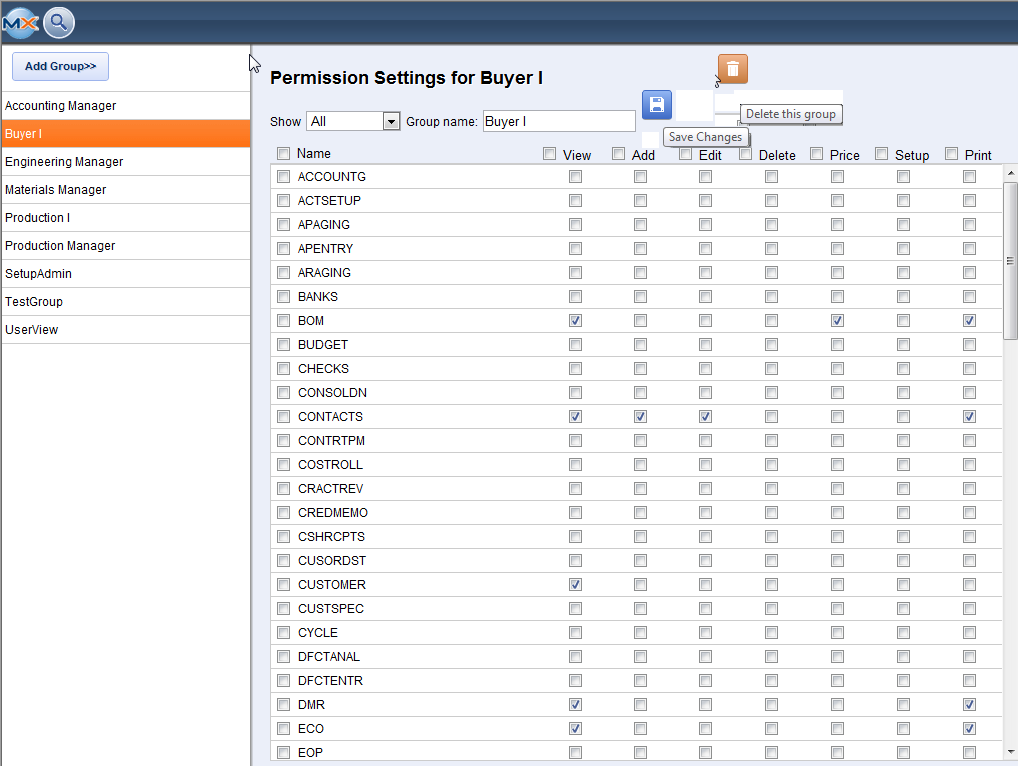 IMPORTANT FIELDS Each listed role has the following sections:
NOTE: Not all modules honor these roles at this time, but that functionality will be added over time. Establishing the groups and permissions will help create a smoother transition as those features are released. Groups should be very specific and grant access accordingly. For example, the admin may not want to grant inventory receiving permission to the Purchasing Manager group, even if the purchasing manager is responsible for receiving. Instead, they may want to create a group for "Receiving Manager" and assign that group to the user. This way if they later hire a Receiving Manager they can grant access to the new user by simply selecting that group, and remove receiving permissions from the Purchasing Manager by simply removing the Receiving group. There are no limits on the number of groups and assigned users. |
| 1.2.3. How To for Group Administration |
| 1.2.3.1. Add or Edit a Group |
Enter WebManEx and Select Setup
Select Group Administration
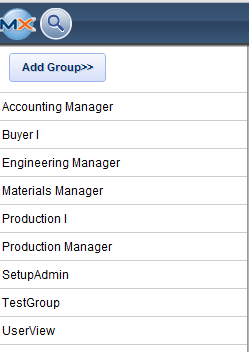 Highlight a Group and the following screen will appear, displaying the Permission Settings for this specific Group
 With in this screen you can Add a Group, Change the Groups Permission Settings, or Delete a Group.
|
| 1.3. Setup New Workstation |
| 1.3.1. Introduction |
|
SETUP - New Workstation ADDRESS
{rootURL}NewWorkstation NOTE: {rootURL} is the URL you use to access web ManEx
AVAILABLE ACTIONS From this screen, the user can:
|
| 1.3.2. Fields and Definitions |
 1. Encrypt Values - When data is inserted into the database it can be encrypted using an encryption password supplied by the user. When the data is retrieved, the same password must be supplied to decrypt the data.
2. SQL Address - Your Domain Name.
3. Database Name - The database name is a string which somehow describes the identity of the database to which this database object is or has been connected.
4. Work Station Id - The workstation ID and computer name are the same. For newer PC's this information can be located in the lower right hand corner on the Microsoft Windows Screen which contains your icons. If it is a public workstation, the workstation ID is located in the upper right hand corner. If you have an older PC or you can't find this information:
Follow these instructions
5. User Name – The userid identifies you to the computer. Userids are typically some form of your name. (Your last name, for example). A userid must be unique throughout the computer system. This allows the computer to distinguish between you and some other person.
6. Password - To prevent other people from using your account via your userid, you are required to have a password. A password allows you and only you to access the computer system through your userid. It basically proves to the computer system that you are who you say you are. So it should be obvious that you DO NOT GIVE YOUR PASSWORD TO ANYONE!!!
|
| 1.3.3. How To |
|
Login to the WebManEx and Select Sales
Select Setup New Workstation and the following screen will be displayed:
 Select use Encrypt Values or not, then enter your SQL Address, Database Name, Work Station ID, User Name, and Password.
1. Encrypt Values - When data is inserted into the database it can be encrypted using an encryption password supplied by the user. When the data is retrieved, the same password must be supplied to decrypt the data.
2. SQL Address - Your Domain Name.
3. Database Name - The database name is a string which somehow describes the identity of the database to which this database object is or has been connected.
4. Work Station Id - The workstation ID and computer name are the same. For newer PC's this information can be located in the lower right hand corner on the Microsoft Windows Screen which contains your icons. If it is a public workstation, the workstation ID is located in the upper right hand corner. If you have an older PC or you can't find this information:
Follow these instructions
5. User Name – The userid identifies you to the computer. Userids are typically some form of your name. (Your last name, for example). A userid must be unique throughout the computer system. This allows the computer to distinguish between you and some other person.
6. Password - To prevent other people from using your account via your userid, you are required to have a password. A password allows you and only you to access the computer system through your userid. It basically proves to the computer system that you are who you say you are. So it should be obvious that you DO NOT GIVE YOUR PASSWORD TO ANYONE!!!
|
| 1.4. User Defined Fields |
| 1.4.1. Introduction for User Defined Fields |
|
SETUP - USER Defined Fields
ADDRESS
{rootURL}UDF Setup
NOTE: {rootURL} is the URL you use to access web ManEx
AVAILABLE ACTIONS From this screen, the user can:
|
| 1.4.2. Fields and Definitions for User Defined Fields |
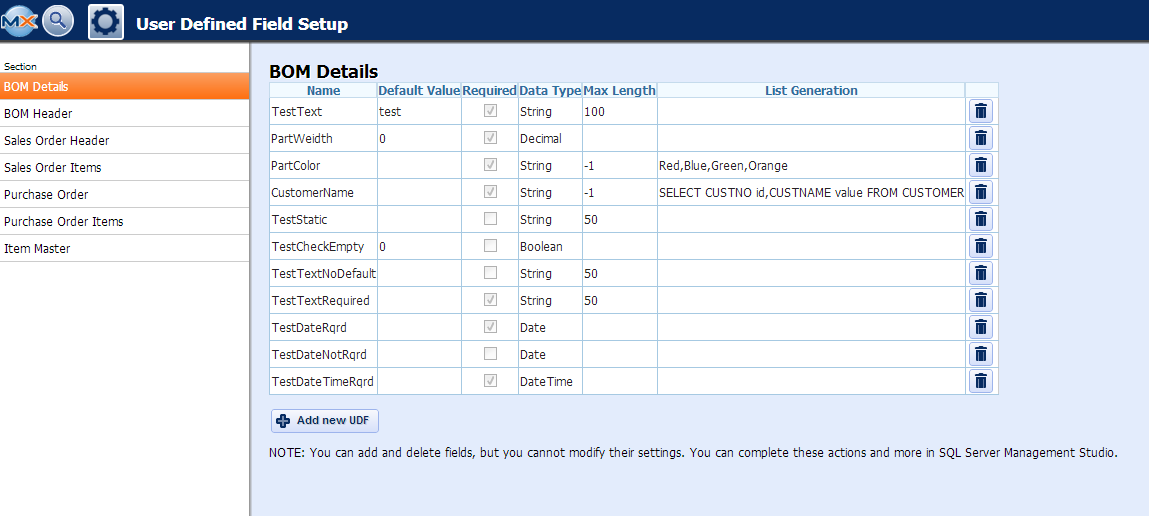 Section: These are the modules or sections you want to add/Setup new User Defined fields to.
Name - Name of the Field
Default Value - The Value entered if applicable
Required - Check this box if it is a required field
Data Type - Field Type
Max Length - Length of Field
List Generation - Generation List
|
| 1.4.3. How To ....for User Defined Fields |
| 1.4.3.1. Setup User Defined Fields |
Enter WebManEx and Select Setup
Select User Defined Fields
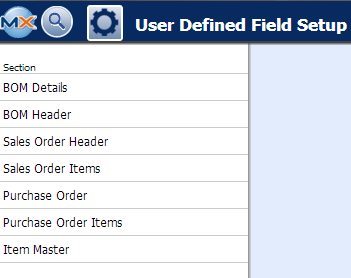 Highlight a Section and the following screen will appear (Note: this screen will be different depending on what Section is selected), displaying the UDF.
 With in this screen you can Add and delete fields, but you CANNOT modify their settings.
Depress the "Add new UDF" and the following screen will be displayed:
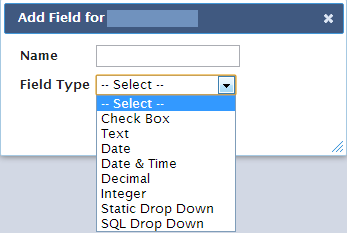 Enter in a Name and select the Field Type from the drop down list, once the Field Type is selected, user will be able to add the Default Value, check the Required box, and add Max Length, if applicable.
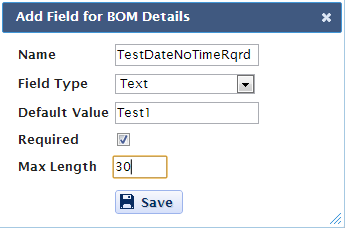 Once this is all complete user can select Save.
The User Defined Fields can then be linked to Inventory PN, Purchase Order, Customer, Packing List, Invoice, Sales Order, and Bill of Material by selecting a record in the ManEx Desktop, and selecting the UD action button (as displayed below).
 The UDF for that section will then be displayed, and user can make changes (if applicable), Save & Exit or Cancel.
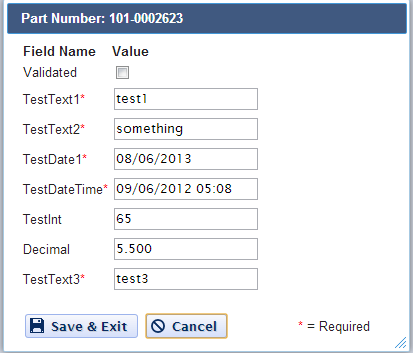 |
| 1.5. License & Registration |
| 1.5.1. Prerequisites for the License & Registration |
| 1.5.2. Introduction for the License & Registration |
| 1.5.3. Fields & Definitions for the License & Registration |
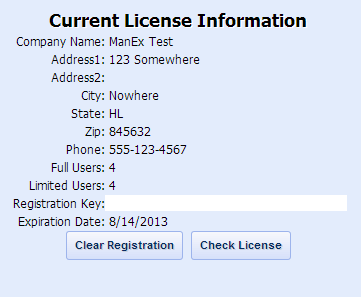
|
| 1.5.4. How To ..... for License & Registration |
| 1.5.4.1. Register Software |
Select Utilities/License & Registration
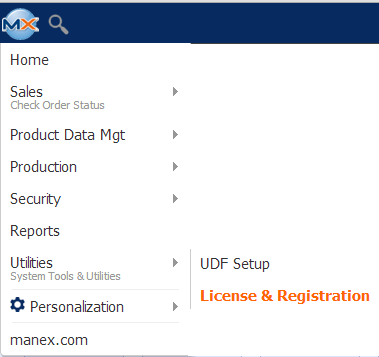 The following screen will be displayed:
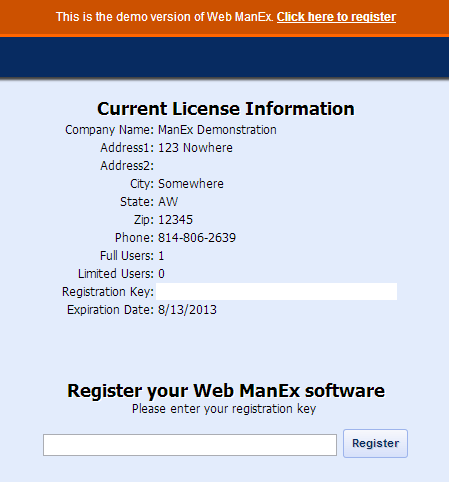 Enter the Registration Key provided by ManEx Support Team and depress the "Register" button;
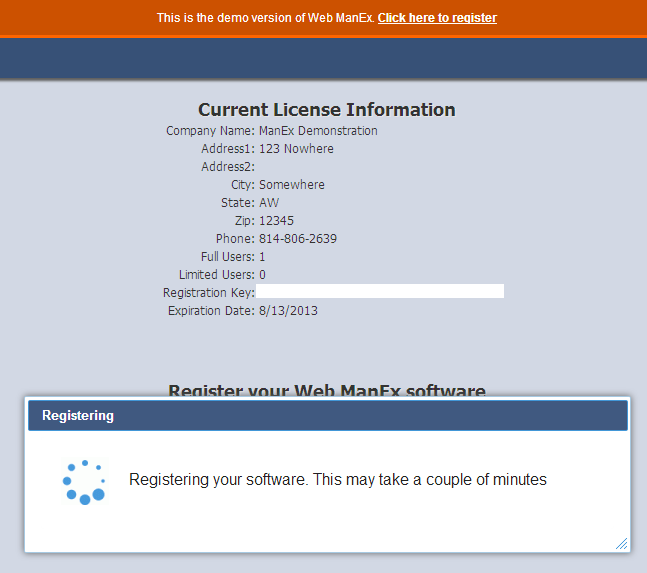 If the registration key entered is incorrect the following message will be displayed:
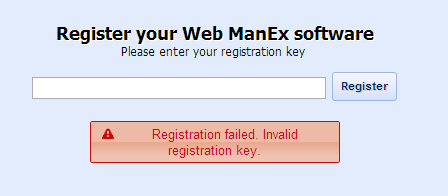 Once software has been register the following screen will be displayed and user may start using the WebManEx.
 |
